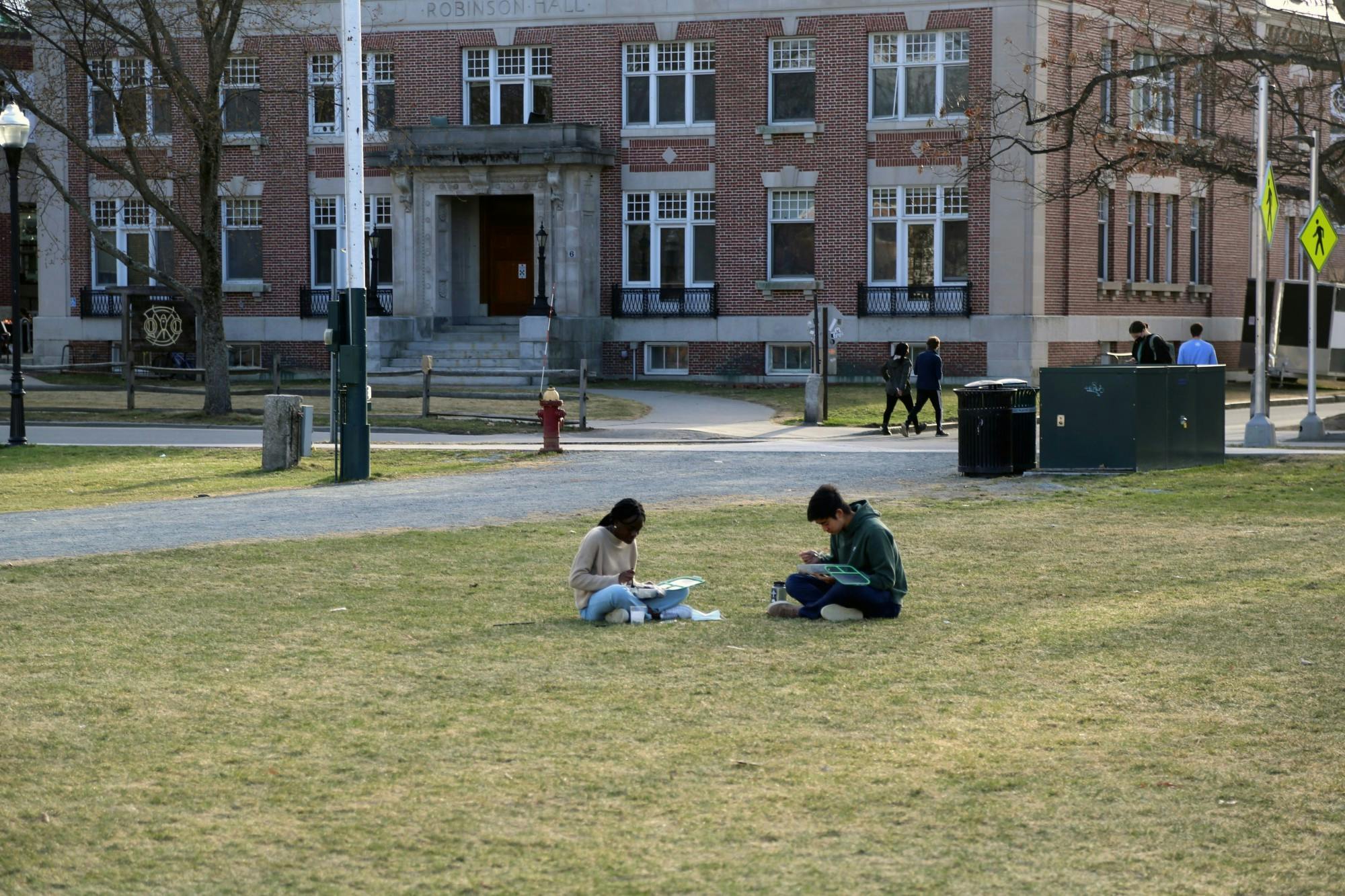This summer, students are enjoying a return to campus with fewer COVID-19 guidelines following an announcement last Wednesday that rescinded the mask mandate on campus for those who are fully vaccinated.
The new masking guidelines were announced on June 23 during a “Community Conversations” livestream and were implemented on June 24, the first day of classes for the summer term. The guidelines state that fully vaccinated people not experiencing COVID-19-like symptoms are not required to wear a face covering indoors or outdoors, with the exception of facilities such as Dick’s House and the COVID-19 testing site. Other new guidelines include the removal of all event and gathering limits, as well as the removal of physical distancing requirements.
As of July 1, 86% of the on-campus Dartmouth community has been fully vaccinated, and 72% of the total Dartmouth community has been fully vaccinated, according to Dartmouth’s COVID-19 dashboard.
Dining halls are open as well, and according to the guidelines, the Class of 1953 Commons will restore additional tables and chairs on July 6 and 7.
“It’s just really good to see people smile,” Piper Stacey ’23 said. “Walking into [‘53 Commons] and seeing people that you haven’t seen in a year and a half is really exciting and feels like college.”
Stacey added that she has been able to attend her virtual biology class while meeting with some of her group mates in person. She noted that this format has allowed her to “have side conversations [and] ask questions” during class without interrupting the lecture.
Student activities, such as some Dartmouth Outing Club sub-clubs, have also begun to have in-person meetings again, according to Stacey, who is one of the vice presidents of the DOC this summer. The DOC will also be running trips all summer, including Sophomore Trips — commonly known as “Strips” — which were not able to run in summer 2020.
“A huge part of the DOC is the ability to be there, share experience and share food and share time with each other,” Stacey said.
She added that people on DOC trips are able to share cookware and stoves once again.
Richard Lai ’23 said that when he arrived on campus last Wednesday, the day that the new guidelines were announced but not yet officially in place, he did not know about the new guidelines and wore his mask everywhere before realizing that “literally no one was wearing their mask.”
“I felt almost pressured in a sense to also not wear my mask, because I realized that if I had my mask on, it almost seemed like I was the only one that was not vaccinated, but obviously I am,” Lai said.
Lai said that he is going to study spaces more frequently after avoiding them in the winter, when he was last on campus, both because he found wearing a mask “for many hours on end” to be “unbearable” and because his room this term does not have air conditioning.
Bryan Tran ’23 said that while he is vaccinated, he still tries to carry a mask around to protect himself as well as faculty and staff, saying that “they don’t really have a choice” regarding “how many people they are exposed to and how many people they meet every day.”
“I know maybe not all [faculty and staff] are vaccinated, so I just want to be safe for me and for the people around me,” Tran said.
He added that new developments, such as the Delta variant of COVID-19 and Australian cities returning to lockdown, have caused him to worry.
Associate vice president of facilities, operations and management Frank Roberts said that FO&M has been working to prepare buildings on campus for “resumption of normal activities.” This includes changing “little things” such as taking down signs on buildings and water fountains that have outdated guidelines.
Custodial routines are also being reestablished, according to Roberts, who said that the previous New Hampshire rule that required disinfection of “high-touch surfaces” is no longer in place due to new guidance from the Centers for Disease Control and Prevention and others.
“We originally thought the announcement was going to come closer to August 1, which was the original target date for reopening, so we had already started our building by building review,” Roberts said.
Another consideration is the buildings and facilities that have not been in use since March 2020. Water fountains are being specially cleaned since they have not “been operated in, say, 15 months,” Roberts said, and added that FO&M has “a procedure in place to flush the water lines” in some of the smaller administrative buildings that have not been in use compared to residence halls and “major buildings.”
Ventilation systems are also a point of interest, according to Roberts, who said that the quality of ventilation needs to be considered when opening spaces.
While FO&M lacks a complete list of spaces that are not back to full capacity, Roberts said that FO&M is keeping track “building-by-building” and “the overwhelming majority of the spaces” are able to return to prior occupancy levels.




